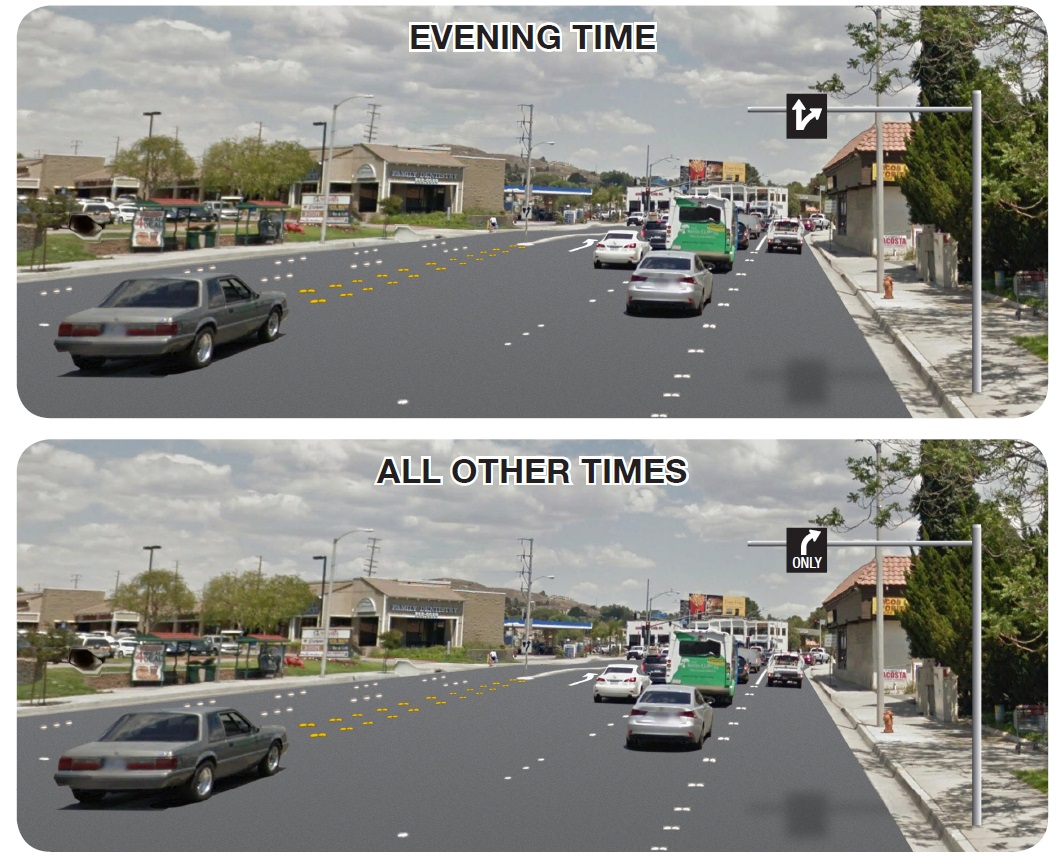Dynamic Lane Change (Finalist)
Location
Soledad Canyon Road at Sierra Highway
City or County Responsible for Project
City of Santa Clarita
Category
Safety or Intelligent Transportation System Projects
Author
Robert Newman
City of Santa Clarita – Department of Public Works
23920 Valencia Blvd, Santa Clarita, CA 91355
661-284-1429
Project Description
To address congestion and queuing at Soledad Canyon Road at Sierra Highway, one of the busiest intersections in the City of Santa Clarita during the afternoon peak, the City implemented a dynamic lane – an operational change that converts a dedicated right turn lane to a right/through lane during the p.m. peak. The change resulted in an increase in throughput of almost 10% and a decrease in travel time! The intersection of Soledad Canyon Road at Sierra Highway carries approximately 80,000 vehicles per day. During peak hours, traffic volumes can exceed the intersection capacity causing excessive delays to motorists. This project drastically decreased congestion by decreasing queues by almost 800 feet and decreasing travel times through the intersection. The decrease in congestions also decreases greenhouse gas emissions because cars are not idling as long. Residents benefit because they are not stressfully sitting in traffic as long, and now have more reliable travel times. The arterial dynamic lane management project’s change of lane utilization in real time is not common practice in Southern California. The project involves a series of dynamic message signs that inform travelers when the lane is exclusively for right turns and when it is a thorough/right lane. Being the first of its kind in the City, early community outreach was performed and the new concept was explained on flyers, social media, print publications and on the City’s website. Innovative data collection techniques are used to perform the before and after analysis. Drone videos are used to survey the queuing at the intersection and to observe the changes resulting from the project. Real-time video analytics are also used to collect data on specific performance measures to evaluate queuing and utilization of the lane. Since its implementation, the City has received positive feedback from the community!





Add Comment